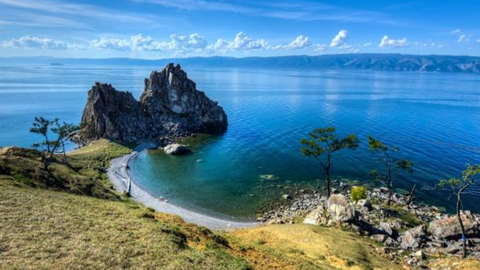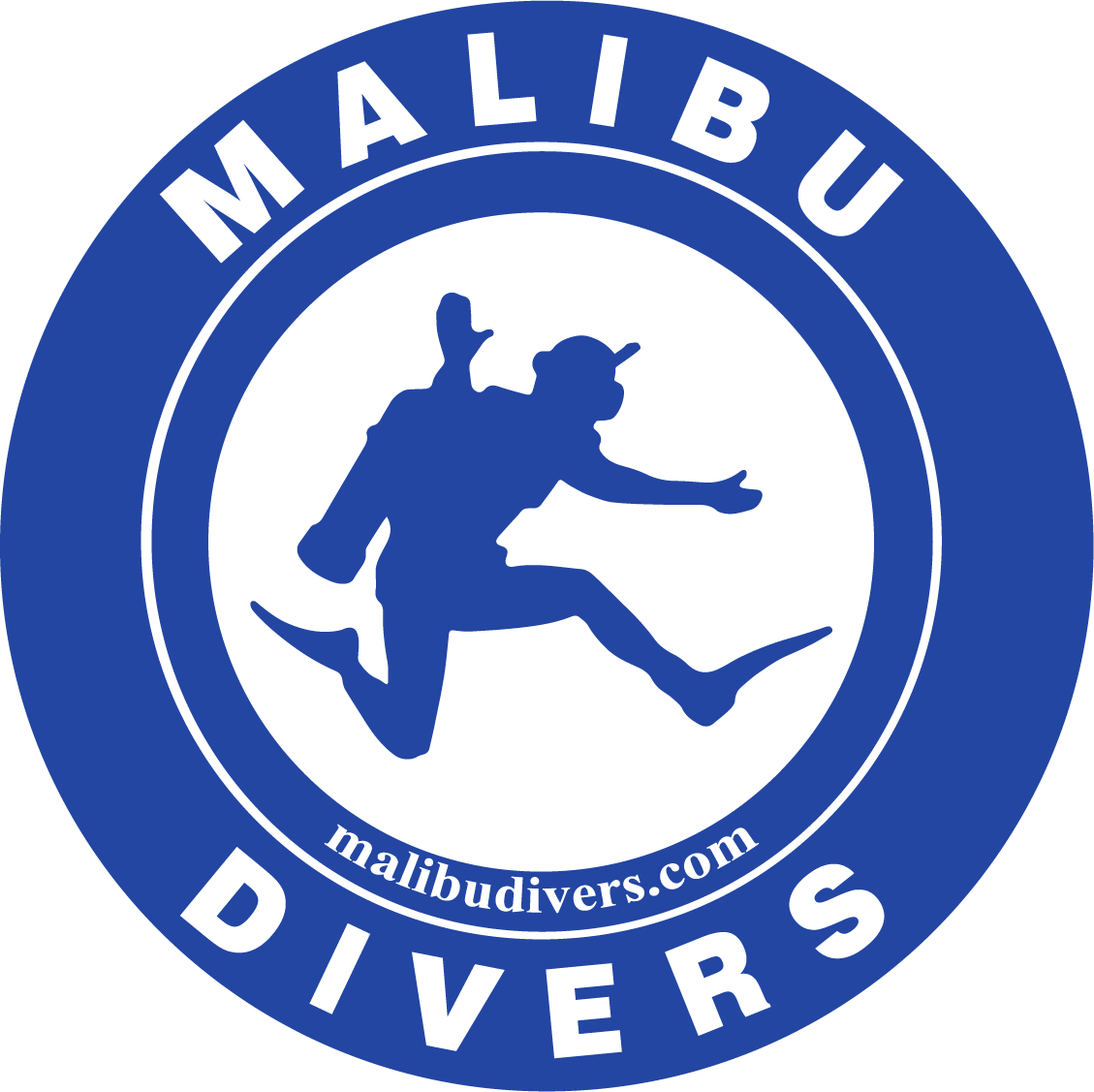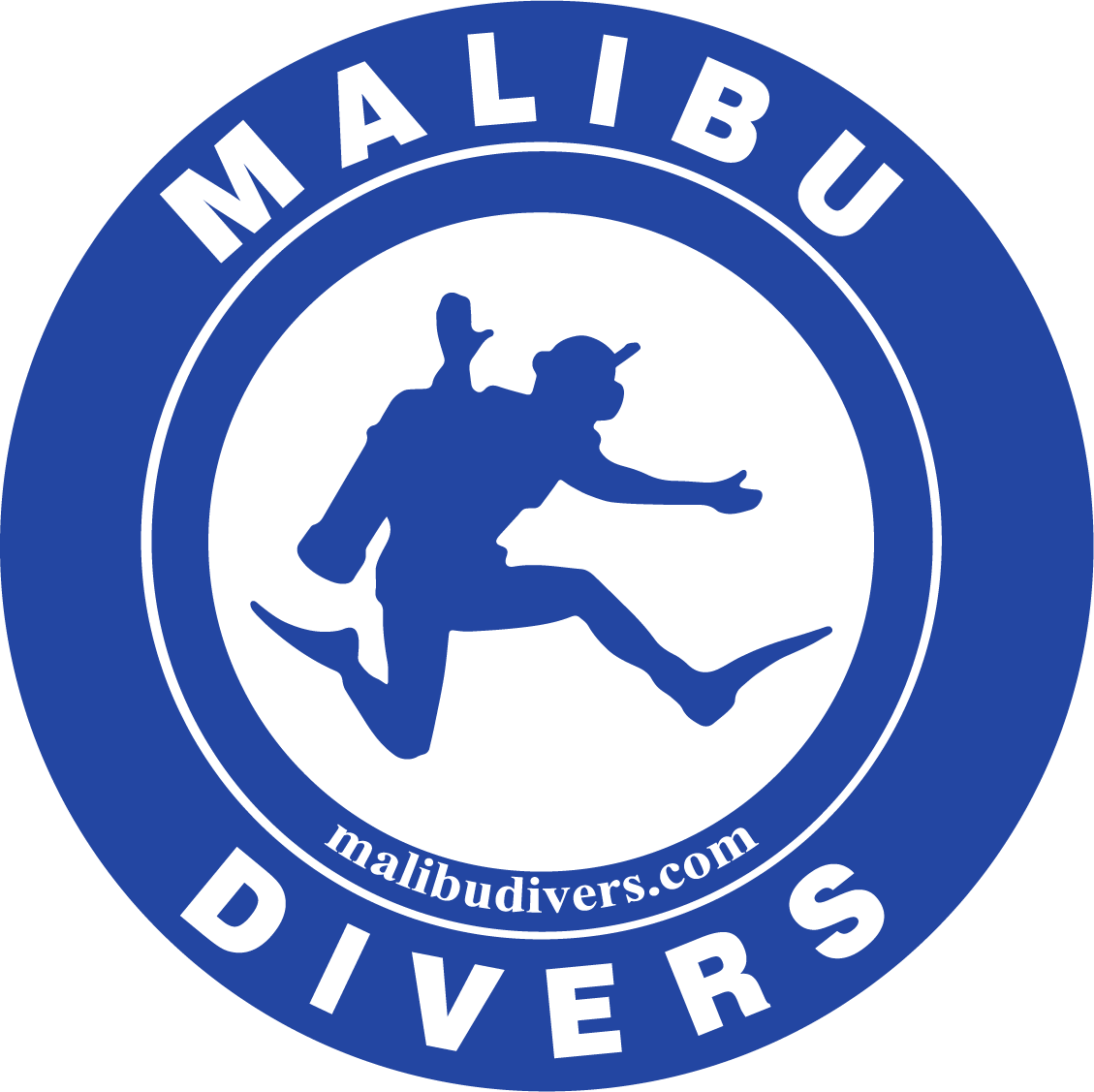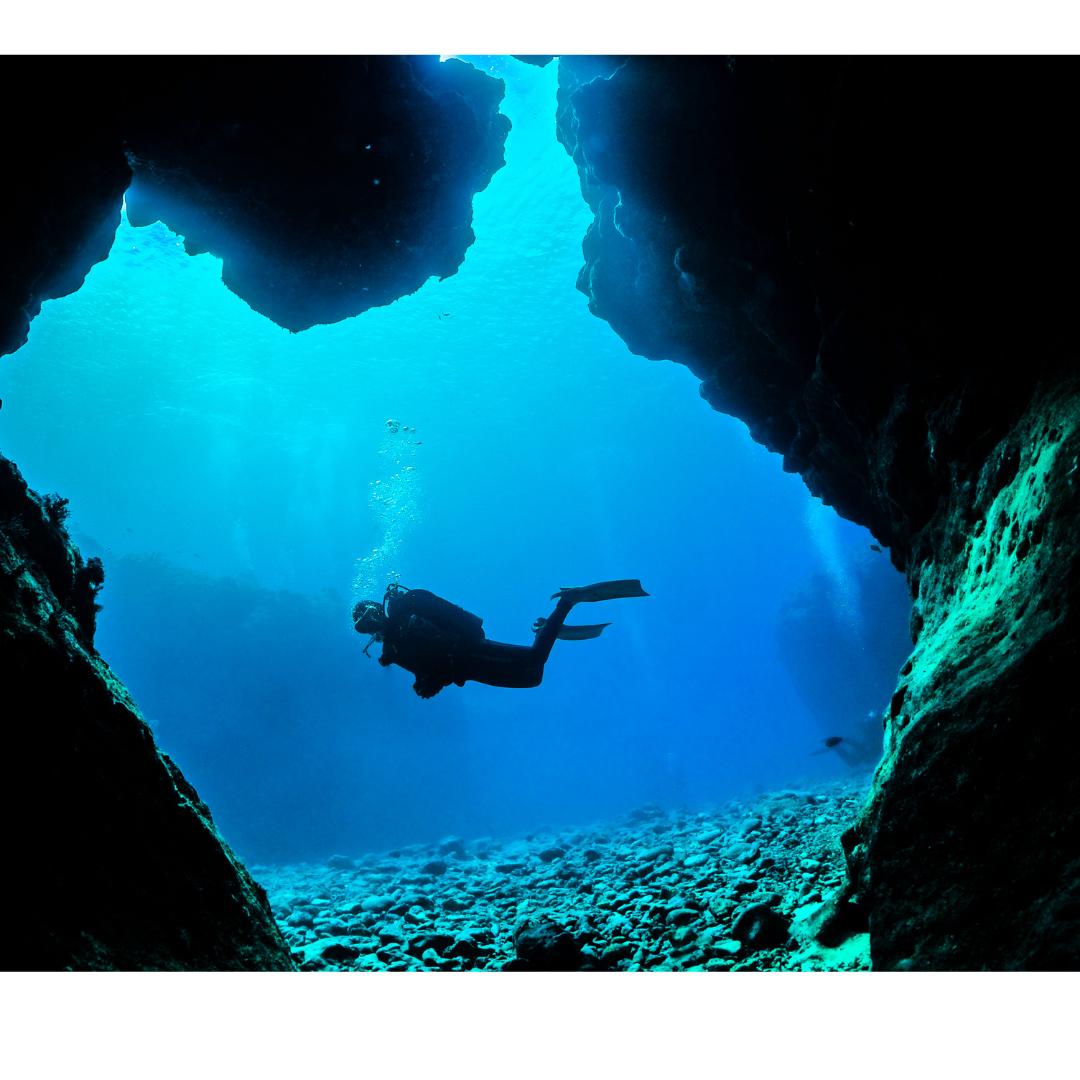The world beneath the ocean's surface holds mysteries that captivate the hearts of adventurers and thrill-seekers. Among the myriad of underwater wonders, diving at tectonic plate boundaries stands out as a truly unique and awe-inspiring experience. In this blog, we will delve into the history of tectonic plates, the fascinating connection between diving and seismic activity, and why exploring these underwater realms matters to divers.

Understanding Tectonic Plates:
Tectonic plates are enormous slabs of the Earth's lithosphere that move and interact with one another. The Earth's surface is divided into several major plates, including the Pacific Plate, North American Plate, and Eurasian Plate. The interactions between these plates lead to the creation of various geological features, such as mountains, trenches, and, importantly for divers, the formation of the ocean floor.
The Birth of Seismic Activity:
Tectonic plate boundaries are dynamic zones where the Earth's plates meet. There are three main types of plate boundaries: divergent boundaries, where plates move apart; convergent boundaries, where plates collide; and transform boundaries, where plates slide past each other. These interactions are not only responsible for shaping the Earth's topography but also for triggering seismic activity such as earthquakes and volcanic eruptions.
The Connection Between Diving and Tectonic Plates:
For divers, exploring tectonic plate boundaries offers a unique opportunity to witness the Earth's geological forces in action. Both freediving and scuba diving enthusiasts can venture into the depths near these plate boundaries to encounter breathtaking underwater landscapes, vibrant marine life, and the remnants of geological activity.
Tectonic plate boundaries can be rich in marine life for several reasons, as the geological activity associated with these regions creates unique underwater environments that foster diverse ecosystems. Here are some factors contributing to the abundance of marine life at tectonic plate boundaries:
- Nutrient Upwelling: Tectonic plate boundaries often feature upwelling zones where nutrient-rich waters from deeper layers rise to the surface. Nutrient upwelling provides a continuous and abundant food source, fueling the growth of plankton and supporting higher trophic levels in the marine food chain.
- Hydrothermal Vents: Some tectonic plate boundaries, especially those along mid-ocean ridges, host hydrothermal vents.These vents release mineral-rich and chemically unique fluids into the surrounding water, creating an environment that supports chemosynthetic bacteria. These bacteria form the base of a food chain that sustains diverse communities of organisms, including tube worms, mussels, and other unique species.
- Diverse Habitats: The geological processes at tectonic plate boundaries lead to the formation of diverse underwater landscapes, including trenches, rifts, and seamounts. These varied habitats provide shelter, breeding grounds, and feeding areas for a wide range of marine species, contributing to overall biodiversity.
- Temperature Gradients: The movement and interaction of tectonic plates can result in temperature gradients in the water, creating different microclimates. Some marine species are adapted to specific temperature ranges, and the presence of temperature gradients allows for the coexistence of various organisms with different thermal preferences.
- Currents and Ocean Circulation: Tectonic activity influences ocean currents and circulation patterns, affecting the distribution of nutrients and marine organisms. Strong currents in these areas can bring in nutrients, larval stages of marine life, and plankton, creating favorable conditions for the development of diverse ecosystems.
- Geological Substrates: The seabed near tectonic plate boundaries can consist of diverse geological substrates, such as volcanic rocks, sediments, and mineral deposits. These substrates offer attachment points for marine organisms like corals, sponges, and algae, creating complex habitats that support a variety of life forms.
- Migration Routes: Tectonic plate boundaries may serve as migration routes for pelagic species, offering favorable conditions and abundant food resources along these underwater features.
It's important to note that while tectonic plate boundaries can be rich in marine life, they also present challenges such as extreme depths, strong currents, and unique environmental conditions. The abundance and diversity of marine life in these areas make them significant for ecological studies and contribute to the overall understanding of life in the ocean.
Freediving at Tectonic Plate Boundaries:
Freediving, or breath-hold diving, allows divers to descend into the depths with minimal equipment. Freedivers can explore underwater fissures, volcanic vents, and other geological features near tectonic plate boundaries. The sense of weightlessness and the intimate connection with the underwater environment make freediving a thrilling and immersive experience.
While freediving at specific tectonic plate boundaries might not be as common as scuba diving due to the challenging conditions and depths involved, there are several locations around the world where freedivers can explore unique geological features associated with tectonic plate activity. Here are some notable places for freediving enthusiasts interested in the wonders of tectonic plates:
- Silfra Fissure, Iceland:
Silfra, located in Thingvellir National Park, is a popular site for both scuba diving and freediving. Freedivers can experience the incredible visibility in the crystal-clear waters and navigate the rift between the North American and Eurasian tectonic plates.
- Lake Baikal, Russia:

Known as the deepest and oldest freshwater lake in the world, Lake Baikal is situated in Siberia and lies along the Baikal Rift Zone. Freedivers can explore the unique underwater features and endemic species in this rift lake.
- Blue Hole, Gozo (Malta):
While Blue Holes are found in various locations globally, the one near Gozo, Malta, is particularly famous. Freedivers can descend into the Blue Hole, a natural sinkhole formed by the collapse of a cave, and explore the underwater arch that leads to the open sea.
- Dean's Blue Hole, Bahamas:
Dean's Blue Hole is the world's deepest known blue hole, plunging to depths over 660 feet (200 meters). Freedivers are drawn to the challenge of descending into the abyss and exploring the underwater formations.
- Cenotes, Mexico:
The Yucatan Peninsula in Mexico is known for its extensive network of cenotes, which are natural sinkholes connected to underground rivers. Freedivers can explore these unique underwater cave systems formed by geological processes.
Remember, freediving at tectonic plate boundaries involves unique challenges, such as cold temperatures, strong currents, and sometimes extreme depths. It's crucial for freedivers to have the necessary skills, experience, and safety precautions in place. Additionally, consulting with local dive professionals and authorities is essential to ensure a safe and enjoyable freediving experience in these geological hotspots.
Scuba Diving Adventures:
Scuba divers, equipped with tanks of compressed air, can delve even deeper into the mysteries of tectonic plate boundaries. Subaquatic adventures near these geological hotspots reveal stunning underwater landscapes, from towering underwater cliffs formed by plate movements to vibrant coral reefs that thrive in the nutrient-rich waters surrounding these areas.
Several locations around the world offer scuba divers the opportunity to explore tectonic plate boundaries and witness the fascinating underwater landscapes shaped by geological forces. Here are some of the most famous places for scuba divers to dive at tectonic plates:
- Silfra Fissure, Iceland:
Silfra is located in Thingvellir National Park and is a rift between the North American and Eurasian tectonic plates. Divers can experience unparalleled visibility in the crystal-clear glacial water, with the chance to touch both continents simultaneously.
- The Great Rift Valley, Africa:
The East African Rift, part of the Great Rift Valley, is a diver's paradise with its unique underwater topography. Divers can explore the rift lakes, such as Lake Malawi, Lake Tanganyika, and Lake Victoria, each offering diverse ecosystems and endemic species.
- Socorro Islands, Mexico:
Located in the Pacific Ocean, the Socorro Islands sit atop the boundary between the North American Plate and the Pacific Plate. Divers can encounter large pelagic species like manta rays, sharks, and dolphins in these nutrient-rich waters.
- Bali, Indonesia:
The Indonesian archipelago is situated along the Pacific Ring of Fire, where several tectonic plates converge. Bali, in particular, offers unique dive sites such as the Liberty Wreck, where divers can witness the impact of tectonic activity on the underwater landscape.
- Galápagos Islands, Ecuador:
The Galápagos Islands are located at the intersection of the Nazca and Cocos tectonic plates. Divers can encounter a variety of marine life, including marine iguanas, hammerhead sharks, and unique species found nowhere else on Earth.
- Azores, Portugal:
Positioned on the Mid-Atlantic Ridge, the Azores archipelago offers divers the chance to explore underwater volcanic formations. Divers can witness hot vents and unique geological structures created by the movement of tectonic plates.
- Lombok, Indonesia:
The Gili Islands, off the coast of Lombok, provide opportunities to dive along the Wallace Line, a boundary between the Australian and Asian tectonic plates. Divers can explore vibrant coral reefs and encounter diverse marine life.
- California, USA:
The Channel Islands, located off the coast of California, sit on the boundary between the Pacific Plate and the North American Plate. Divers can explore kelp forests, sea caves, and underwater cliffs shaped by tectonic activity.
These destinations not only offer thrilling scuba diving experiences but also provide divers with a unique perspective on the Earth's dynamic geology. Each site has its own distinct underwater features and marine life, making them must-visit locations for those seeking to explore the wonders of tectonic plate boundaries beneath the ocean's surface.
Why it Matters to Divers:
Diving at tectonic plate boundaries not only provides an exhilarating experience for enthusiasts but also contributes to our understanding of the Earth's geological processes. Divers can witness firsthand the effects of plate tectonics on the underwater environment, helping scientists study and monitor changes in these dynamic regions. Additionally, exploring these areas can raise awareness about the importance of preserving the delicate balance of marine ecosystems affected by geological forces.
Diving at tectonic plate boundaries offers a unique blend of adventure, exploration, and scientific discovery. As divers venture into the depths, they become witnesses to the Earth's powerful geological forces and gain a deeper appreciation for the interconnectedness of the planet's natural wonders. Whether freediving or scuba diving, the thrill of exploring these underwater realms is a testament to the enduring allure of the ocean's mysteries.



Share:
Drysuit Diving Decisions: A Comprehensive Guide to Choosing the Perfect Drysuit for Your Comfort and Safety
Diving into Greatness: Lloyd Bridges and the Enduring Legacy of Sea Hunt